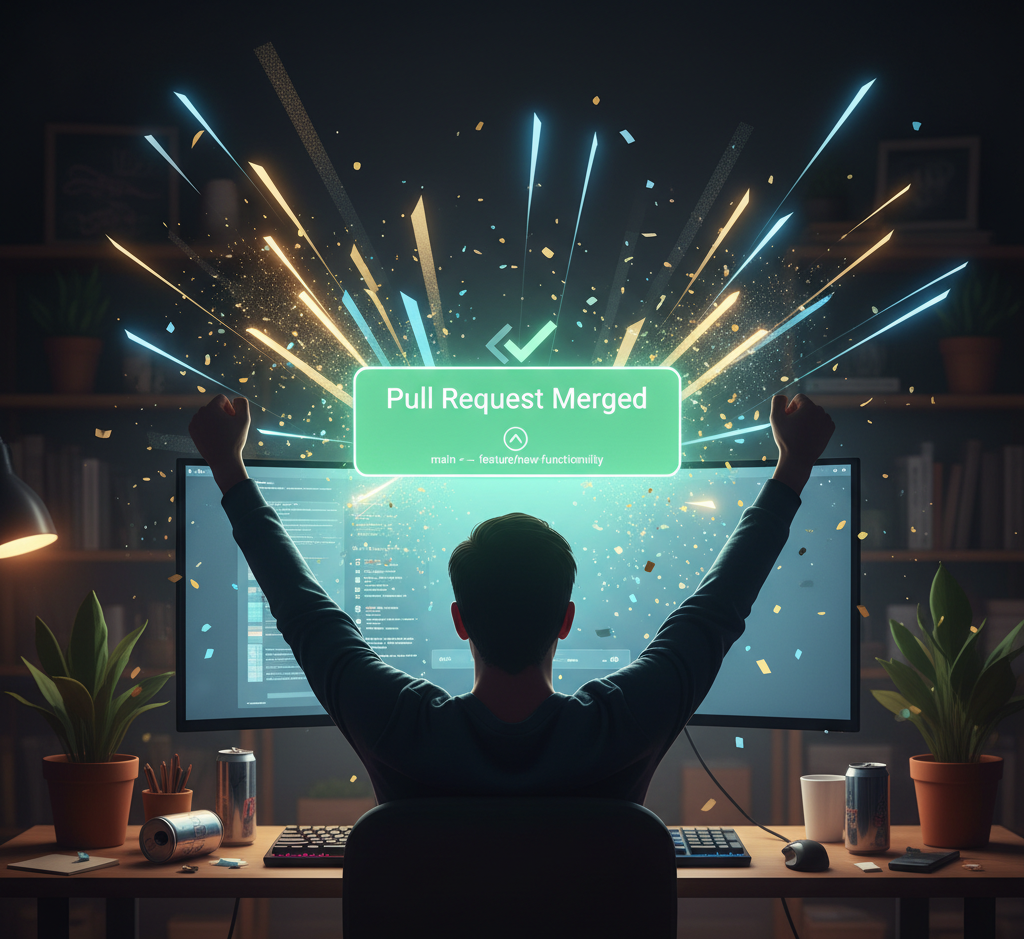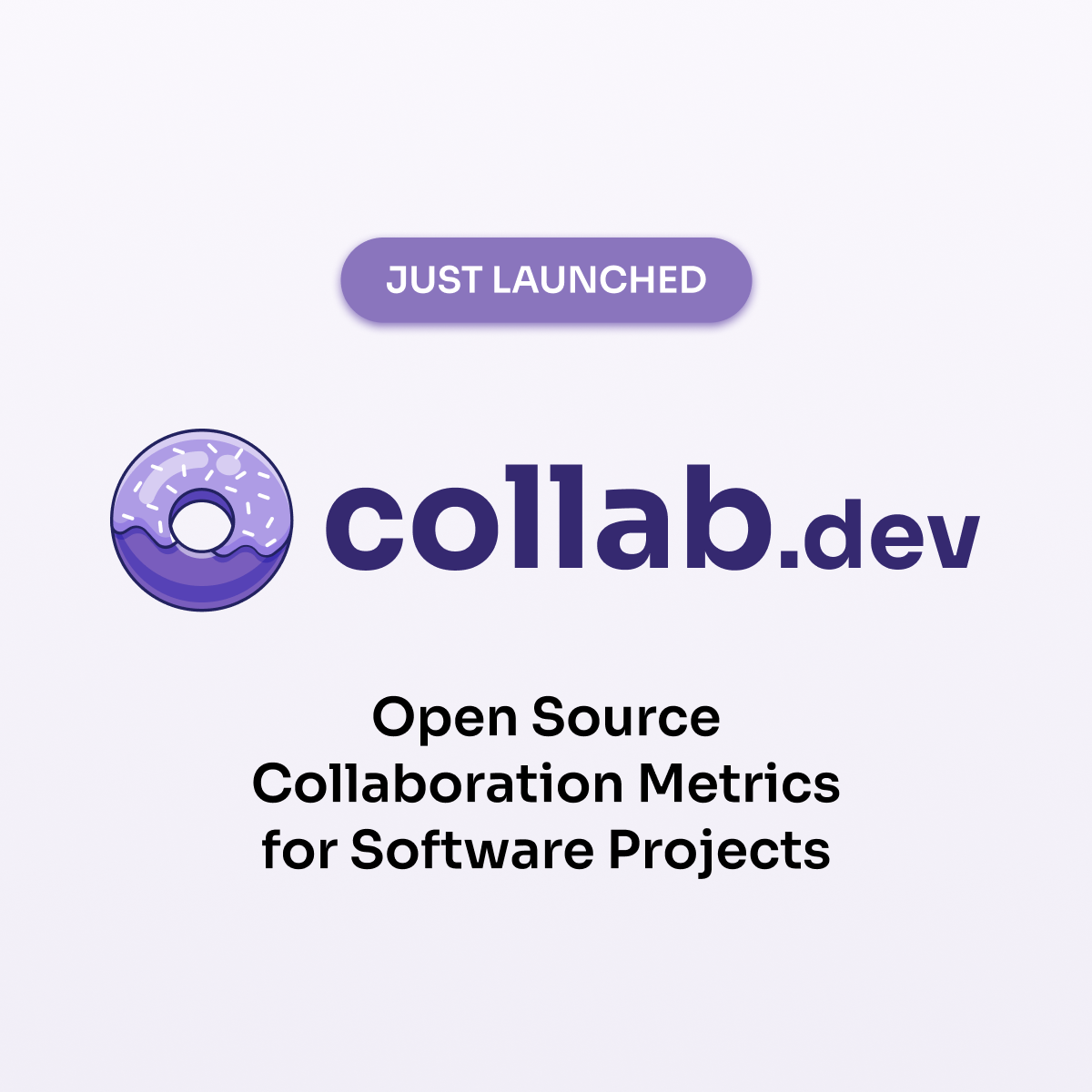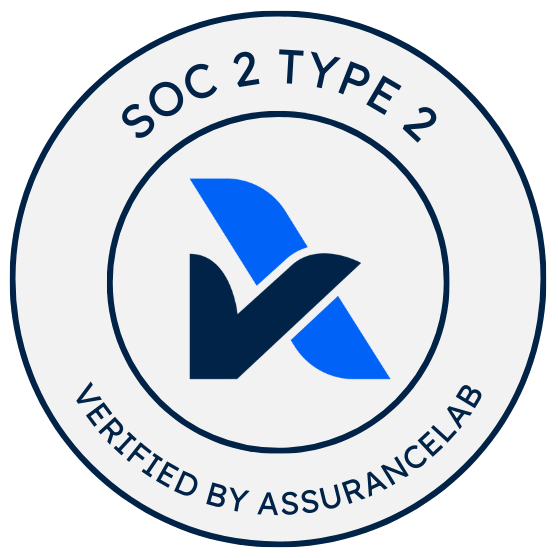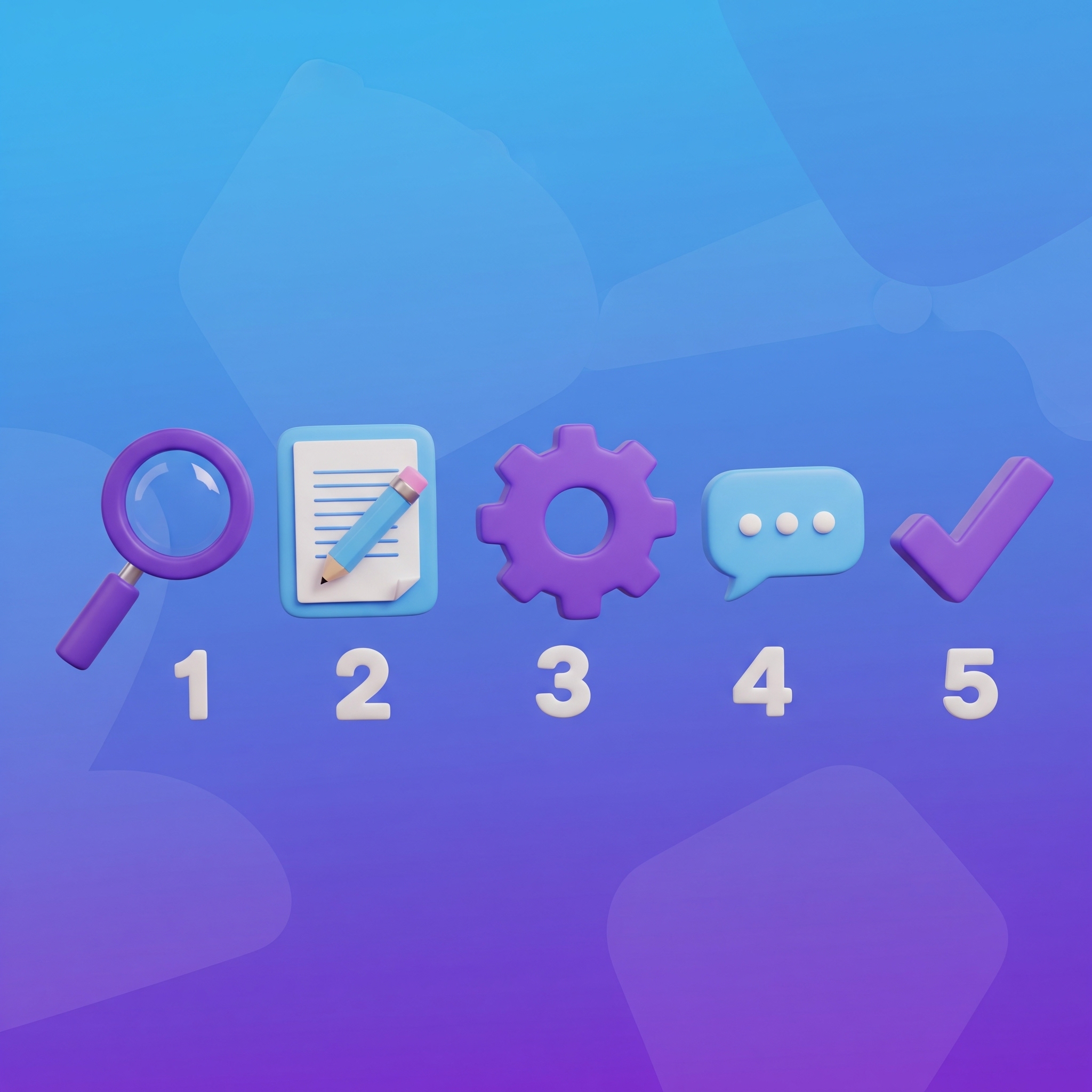
AI Agents in Open Source: Evolving the Contribution Model
AI agents are reshaping how we contribute to open source, moving from manual coding to guiding AI. Explore the challenges, opportunities, and best practices for maintaining the human element in collaborative development.
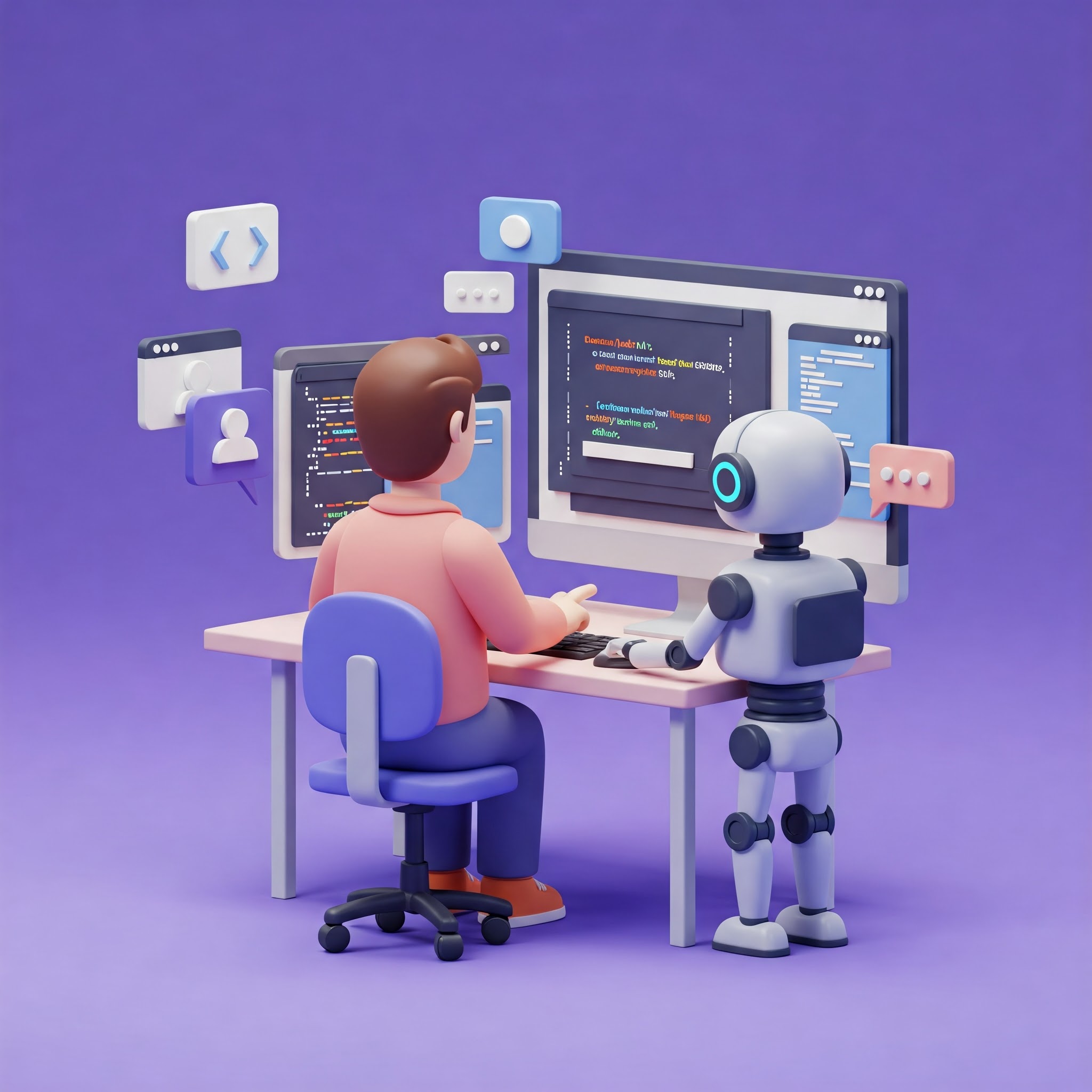
Open-source development has long been characterized by human contributors writing code, submitting patches, and collaborating on issues. However, a new paradigm is emerging as AI agents actively participate in open-source projects, bringing both opportunities and challenges to community-driven software development.
While working on collab.dev, we observed projects with staggering bot activity, pointing toward a broader trend in automation within open-source development. According to the most recent repo activity, projects demonstrating how automated systems are increasingly becoming central to open source workflows include:
- dotansimha/graphql-yoga: 89.1% of PRs created by bots
- hedgedoc/hedgedoc: 87.6% of PRs created by bots
- nestjs/nest: 93.7% of PRs created by bots
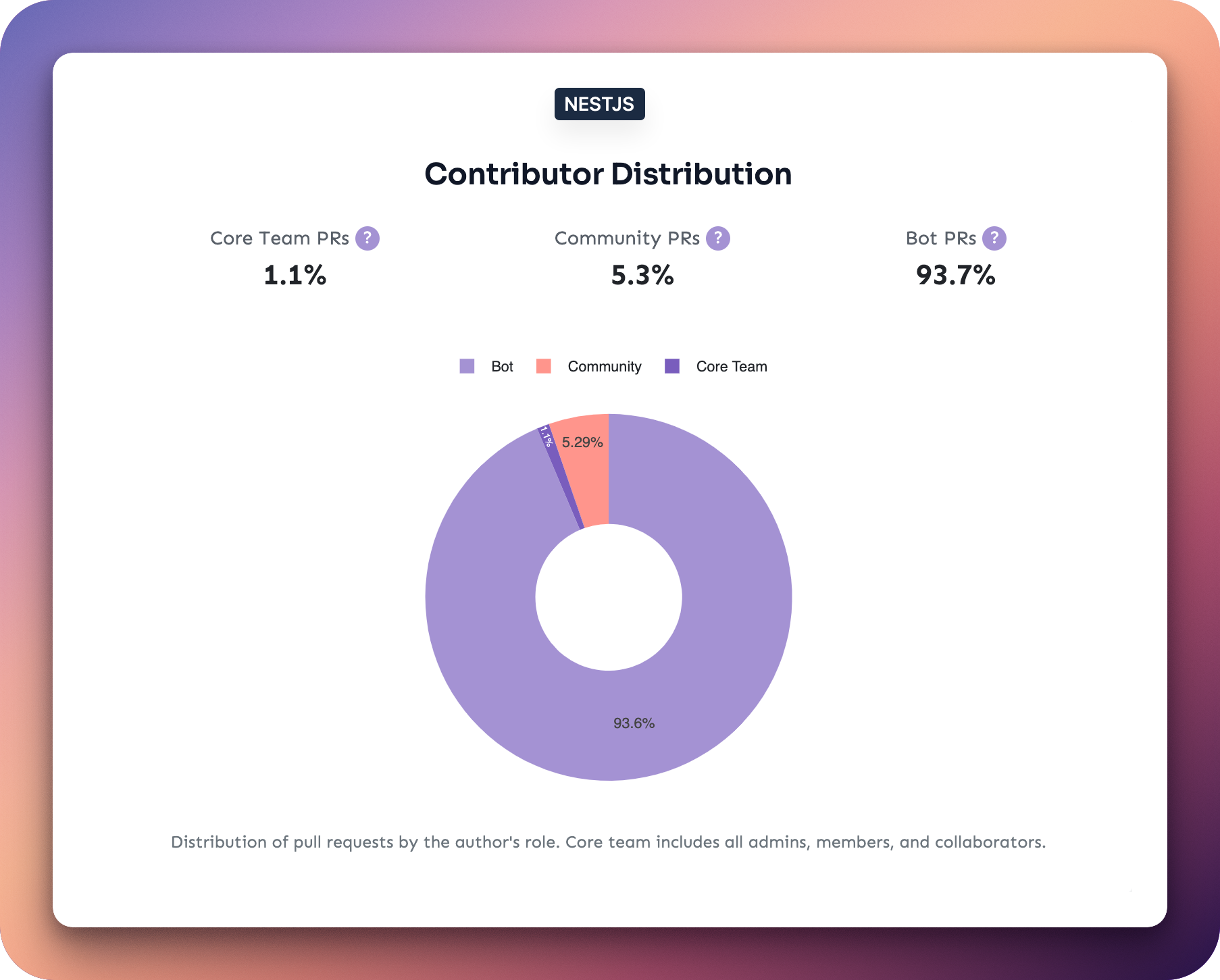
This evolution of automated contributions has now reached a new frontier with AI agents that can not only execute predefined tasks like traditional bots but also learn, adapt, and generate novel solutions.
🔄 The Paradigm Shift: From Contributing Code to Guiding AI
Traditional open source is centered around manually writing code. Today, contributors increasingly guide AI agents to generate code and documentation, representing a move toward higher-level abstractions in software creation.
🛠️ Key frameworks illustrating this shift include:
- Auto-GPT: Autonomous task completion via large language models
- AgentGPT: Deploys autonomous agents directly through web browsers
- CrewAI: Coordinates multiple agents with defined roles for collaboration
- MetaGPT: Simulates a complete software development team structure
- CAMEL: Uses role-playing multi-agent simulations for problem-solving
Onboarding new contributors has always required significant time investment. AI agents can lower these barriers by explaining codebases, answering technical questions, and suggesting starter issues for newcomers.
Initiatives like OnlyDust and Simular AI demonstrate early examples of AI-facilitated contribution evaluation. While human mentorship remains irreplaceable, AI assistance can significantly reduce barriers to entry. 🌱
👨💻 The Evolving Role of the Maintainer
Project maintainers now must oversee both human- and AI-generated contributions, bringing new responsibilities:
- ✅ Verifying the quality and security of AI outputs
- 🏗️ Ensuring architectural consistency
- 🔖 Handling attribution for AI-influenced work
These challenges require updated skillsets, including AI-assisted review tools and new workflows for hybrid contribution models.
The involvement of AI challenges traditional models of authorship in open source. Communities must rethink how contributions are attributed when AI is involved and establish clear disclosure practices.
Legal considerations add complexity, as human authorship is often required for copyright protection, while purely AI-generated content may fall into legal gray areas.
🤝 Maintaining the Human Element
The heart of open source has always been human relationships and collaboration. AI can augment, not replace, these experiences.
AI and humans are most effective when working together in a collaborative partnership, combining AI’s speed and pattern recognition with human creativity and judgment in areas like design decisions, code reviews, and community interactions. Transparency about AI usage and conscious efforts to foster this collaborative dynamic will be essential for creating truly co-intelligent software teams.
🔍 Current Examples and Best Practices
AI agents are already being integrated across the open-source landscape through tools like Keploy for test generation, Phidata for documentation, and frameworks like CrewAI for complex collaborative tasks.
As we navigate this new territory, emerging best practices include:
- Transparency 🔎: Disclose AI tool usage in contributions
- Human Oversight 👁️: Review all AI-generated content
- Strategic Application 🎯: Use AI where it’s most effective
- Documentation 📄: Record AI tool usage clearly
- Ethical Standards 🧭: Practice responsible AI experimentation
AI agents are reshaping open source contribution models, offering speed, scalability, and new forms of participation. With thoughtful adaptation and strong human-centered values, open source can continue to thrive in an AI-augmented future.
Interested in maximizing collaboration between humans and AI in your software projects? Check out PullFlow, the first collaboration platform for co-intelligent (human + AI) software teams.
